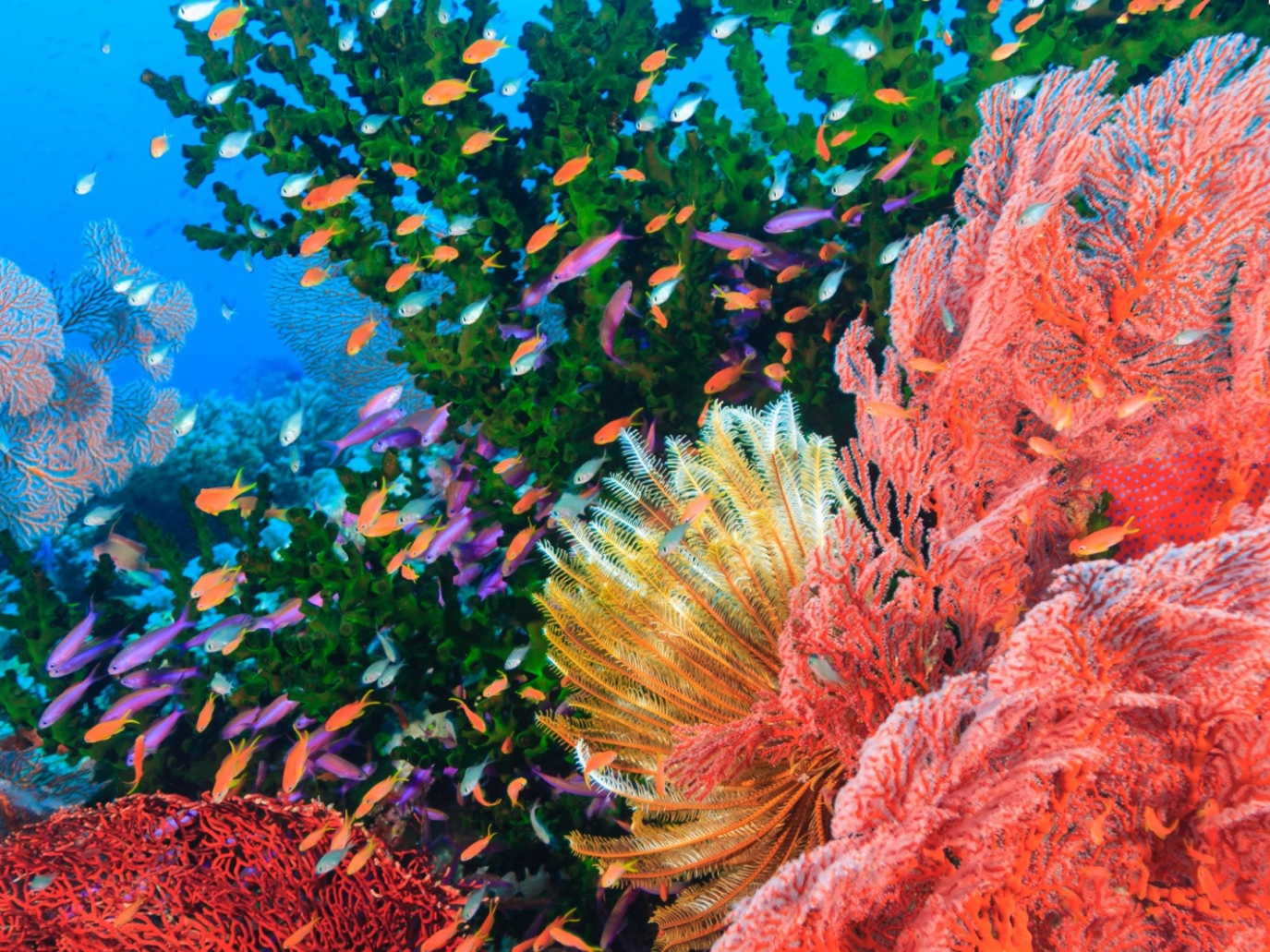As part of the Decade of Ocean Science for Sustainable Development (the Ocean Decade), UNESCO's Intergovernmental Oceanographic Commission released ten White Papers, each addressing complementary goals for the international community and each of us to ensure the ocean is healthy, resilient, safe, clean, productive, accessible, predictable, and inspiring and engaging. Renewable Matter decided to explore these ten challenges through a series of ten articles, each focusing on a specific paper.
The second White Paper focuses on the importance of protecting and restoring marine ecosystems and biodiversity. Over 20 international experts contributed to the working group that drafted it, led by Frank Muller-Karger, Professor in the College of Marine Science, University of South Florida, USA, and Aileen Tan Shau Hwai, Professor at the School of Biological Sciences, Universiti Sains Malaysia (USM).
The group's aim was to identify gaps and priorities for establishing key indicators essential to achieving the Ocean Decade “Challenge 2” by 2030. This challenge involves understanding the effects of multiple stressors on ocean ecosystems and developing solutions to monitor, protect, manage, and restore ecosystems and their biodiversity in the context of environmental, social, and climate change.
We need clarity on what ecosystems need to be restored
“Everything mankind has developed, and our own lives, depends on numerous other life forms, whether on land, in the air, or in the water,” Professor Frank Muller-Karger tells Renewable Matter. "Regarding the ocean, we do not rely on a single species, but on a diversity of organisms. Some provide food and materials, while others contribute by filtering nutrients, producing oxygen and chemicals that can be powerful farmaceuticals, supporting food webs, absorbing carbon dioxide, or even serving as indicators of pollution. All these processes significantly impact our economy and support vital industries like fisheries and tourism."
To understand the importance of protecting our seas and our close connection to them, let’s consider OECD projections that by 2030 the ocean economy could exceed 3 trillion dollars. Sectors such as aquaculture, offshore wind, fish processing, and shipbuilding and repair are expected to grow rapidly, also contributing to increased employment. However, factors such as pollution, the climate crisis, and other anthropogenic activities may alter the composition of marine species and organisms over time, creating uncertainty about the availability of fish stocks and ecosystem services we have relied on until now.
"The question is, can we predict what will happen to the marine life we depend on? At the moment, it's really difficult,” Muller-Karger adds. "We can't even accurately predict the annual or seasonal trends of the fish species that fishermen rely on. We expect these kinds of fish to come in every year, but over longer periods, such as 50 or 100 years, prediction becomes extremely complex." Moreover, due to the lack of data, it is unclear which ecosystems can be restored. Some may be so degraded that restoration is too costly or even impossible.
A data issue
To address these issues and understand the dynamic changes in marine life, the paper identifies strategic data collection as a key element in achieving the goals of the second Ocean Decade challenge. The information collected to date is fragmented, not shared or distributed across different databases, often is not in formats that are useable, and is mostly focused on coastal areas in developed countries. Consequently, the ability to assess and predict ecosystem changes in vulnerable coastal areas, deep-sea environments, and remote locations, such as those that are partially or permanently frozen, remains limited.
“In this paper, we propose agreeing on a minimum set of information that is consistently shared across countries, communities, governments, industries, and research sectors,” Muller-Karger stresses. "We should operate as we do in weather forecasting, where precise standards for measuring wind, temperature, and humidity are internationally established and shared globally to create universally accepted forecasts. Some contribute more, some contribute less, but there is a minimum of shared data in standardised formats and units. We want to see the same approach in ocean observations, including various factors such as temperature, salinity, oxygen, and, of course, biological data."
Coordinating Investments
Once data are collected, a minimum set of variables can be shared globally to achieve the goals outlined in the report and benefit everyone. This means coordinating and enhancing co-design among existing networks of research institutions, universities, indigenous communities, policymakers, and the private sector. Major investments are taking place now through research, the finance sector, and in the implementation of programs such as for pollution, carbon, energy, and coastal zone management. These can be better coordinated and follow standards in information management to achieve these outcomes. We can do a better job in the application of new and existing technologies and developing innovative solutions to manage our activities by considering and planning for biodiversity outcomes.
“Any action will have an impact on biodiversity and can have a positive or a negative economic consequence,” Muller-Karger continues. "If we don't understand our dependence on these ecosystems in a given area, we risk undermining the benefits we derive from them, leading to social and economic repercussions. The paper does not offer specific guidance on how to invest, as this is an area that is constantly evolving. However, we would like the financial sector to pay more attention to these processes and issues."
Also read: MARINE POLLUTION, THE FIRST CHALLENGE OF THE OCEAN DECADE
The importance of indigenous communities for marine ecosystems
Another crucial element concerning ecosystem restoration and biodiversity is the wisdom of indigenous communities, which is rooted in knowledge accumulated over centuries and millennia. “There is a common misconception that traditional knowledge is developed differently or is distinct from academic knowledge,” warns Muller-Karger. "This report involved several indigenous experts who criticise the use of the terms “Western science” and “traditional knowledge”, which implies some geographic superiority. Indigenous communities develop knowledge just like anyone else: they encounter a problem, formulate questions, and collect observations. The information collected over generations is internalized in different ways by the different communities, and then they draw conclusions – often acting on it. Today, many members of Indigenous nations work in academic, private, and government institutions. The paper emphasises that these processes are no different from that used by anyone else, and the point is respecting historical lands and waters, cultures, and working together to achieve common goals."
In the past, indigenous knowledge has often been exploited without bringing real benefits to their communities. It is essential to review this approach in line with the United Nations Declaration on the Rights of Indigenous Peoples (UNDRIP). Strategies co-designed with indigenous communities should include clear guidelines on intellectual property, data management, and protection against the misuse of such knowledge, similar to the protections adopted by universities and the private sector.
“It is not simply a matter of going to indigenous communities, telling them what to do, exploiting their resources or knowledge, and then leaving,” Muller-Karger concludes, "Rather, it is about establishing relationships with different groups of people. You need to develop a strategy that allows local communities to access better information and more tools, and be empowered to manage their resources more equitably”.
This article is also available in Italian / Questo articolo è disponibile anche in italiano
Cover image: ImageSourceCur, Envato



